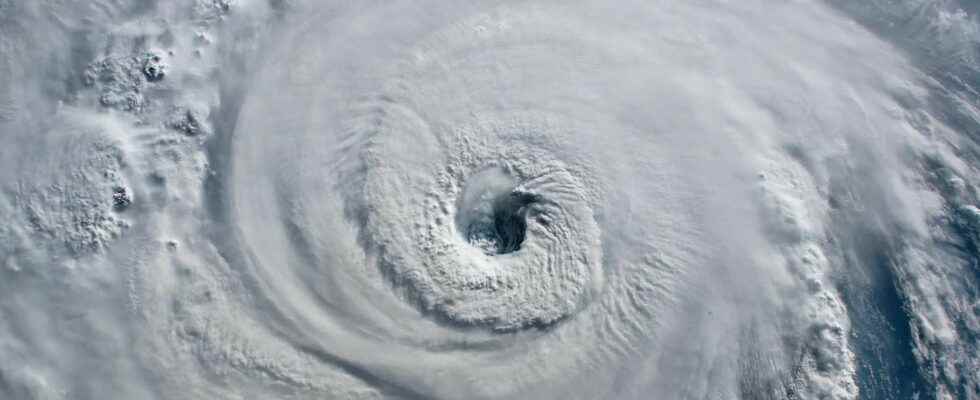the Loop Currenta warm ocean current, is currently further north than usual: a pattern resembling that of the year 2005, known for the destructive hurricane Katrina.
You will also be interested
[EN VIDÉO] The terrible hurricane Irma seen from the ISS As big as France and more powerful than Harvey or Katrina, Hurricane Irma threatens to devastate the West Indies, Cuba and Haiti. Here it is seen from space, filmed on September 5 by the cameras of the ISS, at an altitude of 400 km. He had just moved to category 5.
The season hurricanes are currently beginning in the Atlantic with conditions conducive to the development of a large number of phenomena, according to the different organisms studying the atmosphere : the water of the Gulf of Mexico (the starting point of cyclonic phenomena) is warmer than normal and therefore provides moreenergy depressions and tropical storms to turn them into hurricanes. Moreover, the phenomenon La Ninawhich has persisted for two years, is also known to generate very active hurricane seasons.
But according to a publication of the University of Miamianother parameter needs to be monitored: the Loop Current which is a tributary of Gulf Stream. This is a warm ocean current that flows through the Gulf of Mexico. It extends from the peninsula of Yucatán, rises towards the Gulf of Mexico and sets out again towards the Strait of Florida, forming undulations, even a loop.
A source of energy for hurricanes near the US coast
This Loop Current is an important source of energy for hurricanes : the heat rises and creates turbulence altitude. The depressions and storms tropical storms that pass above are therefore even more unstable, until they strengthen at the hurricane stage. This current of hot and tropical water is currently rising very far north, near northwestern Florida: the water temperature locally reaches 28 to 29°C in the loop of the Loop Current. If a tropical storm or hurricane passes over such heat, the hot water powers their mechanism and these can then see their intensity explode very quickly. The heat of the water does not necessarily lead to more cyclonic phenomena, but clearly increases the power of those which pass over warm waters: tropical storms easily transform into hurricanes when the water temperature reaches 26°C. It should be noted that hurricanes draw their energy from the first 30 meters of water depth, a surface where hot water can cool off easily by continuously mixing with colder water. But the Loop Current is much deeper, warmer and saltier than the rest of the water in the Gulf of Mexico. These characteristics do not allow surface water to mix and cool. Last mid-May, the readings of the Loop Current indicated temperatures of 25 to 26°C at 100 meters depth, very high values.
The devastating hurricane Katrina had benefited from the Loop Current
This year, the position of Loop Current closely resembles that of the one present in May 2005 in the same area. The 2005 hurricane season was marked by the historic catastrophe of Hurricane Katrina, which hit the coasts of New Orleans (United States) in category 5, with winds of 280 km / h, in August 2005. Katrina is one of the most powerful hurricanes in the history of the United States. United, with more than 1,800 dead and 108 billion dollars in damage. The hurricane had intensified to maximum category in an extraordinary way just before arriving in Louisiana, having just passed over the Loop Current.
Also in 2005, two other Category 5 hurricanes, Wilma and Rita, had also intensified after crossing over this current. The 2022 hurricane season brings together all the atmospheric and oceanic conditions more than ever to give rise to major phenomena.
Do you want to access Futura without being interrupted by advertising?
Discover our online subscriptions and browse without ads! At this moment, the Mag Futura is offered for a 3-month subscription to the subscription “I participate in the life of Futura”!
What is Mag Futura?
- Our first paper journal of more than 200 pages to make science accessible to as many people as possible
- A dive into the heart of 4 scientific themes that will mark 2022, from the Earth to the Moon
*Mag Futura is sent after the third month of registration.
Interested in what you just read?

